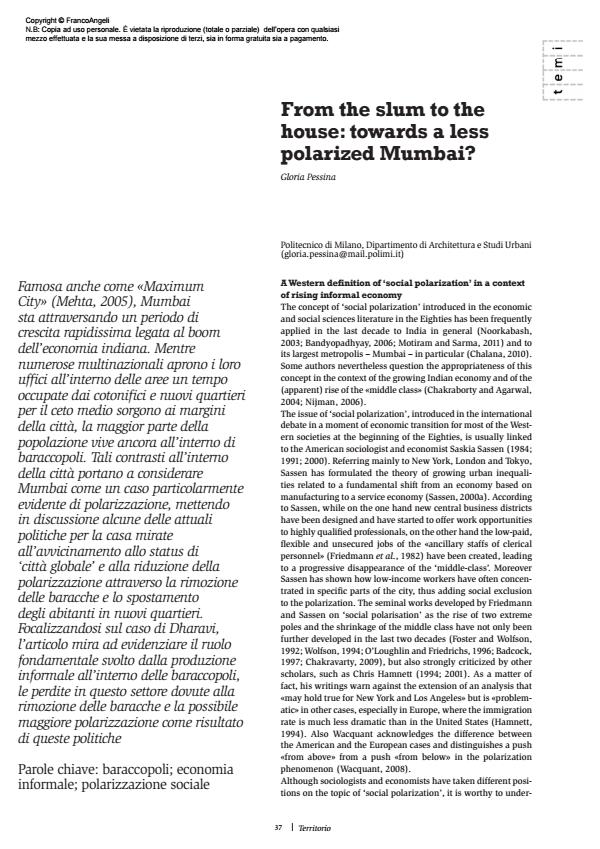From the slum to the house: towards a less polarized Mumbai?
Journal title TERRITORIO
Author/s Gloria Pessina
Publishing Year 2013 Issue 2013/65
Language English Pages 7 P. 37-43 File size 532 KB
DOI 10.3280/TR2013-065005
DOI is like a bar code for intellectual property: to have more infomation
click here
Below, you can see the article first page
If you want to buy this article in PDF format, you can do it, following the instructions to buy download credits

FrancoAngeli is member of Publishers International Linking Association, Inc (PILA), a not-for-profit association which run the CrossRef service enabling links to and from online scholarly content.
Also famous as ‘Maximum City’ (Mehta, 2005), Mumbai is undergoing a period of extremely rapid growth as a result of the booming Indian economy. While numerous multinationals are opening offices in areas once occupied by cotton mills and new middle class districts are springing up on the margins of the city, most of the population still live in shanty towns. Contrasts like these within the city show Mumbai as a particularly clear case of polarisation, which raises doubts over some current housing policies designed to raise it to the status of a ‘global city’ and to reduce polarisation by removing the shanty towns and moving the inhabitants to new neighbourhoods. The paper focuses on Dharavi and attempts to highlight the fundamental role played by informal production in the shanty towns, the losses in this sector due to the removal of the shanty towns and the possible greater polarisation resulting from these policies.
Keywords: Shanty towns; informal economy; social polarisation
- Socio-spatial polarization in the urban neighborhoods of Hyderabad Shraddha Pandit, Arindam Biswas, in Journal of Housing and the Built Environment /2025
DOI: 10.1007/s10901-025-10233-x
Gloria Pessina, From the slum to the house: towards a less polarized Mumbai? in "TERRITORIO" 65/2013, pp 37-43, DOI: 10.3280/TR2013-065005